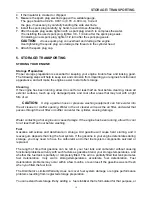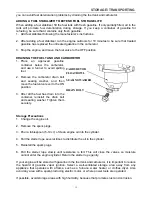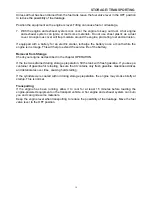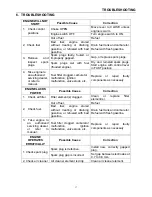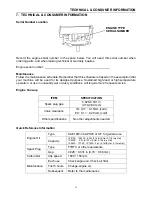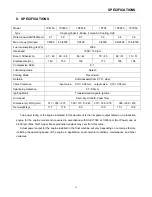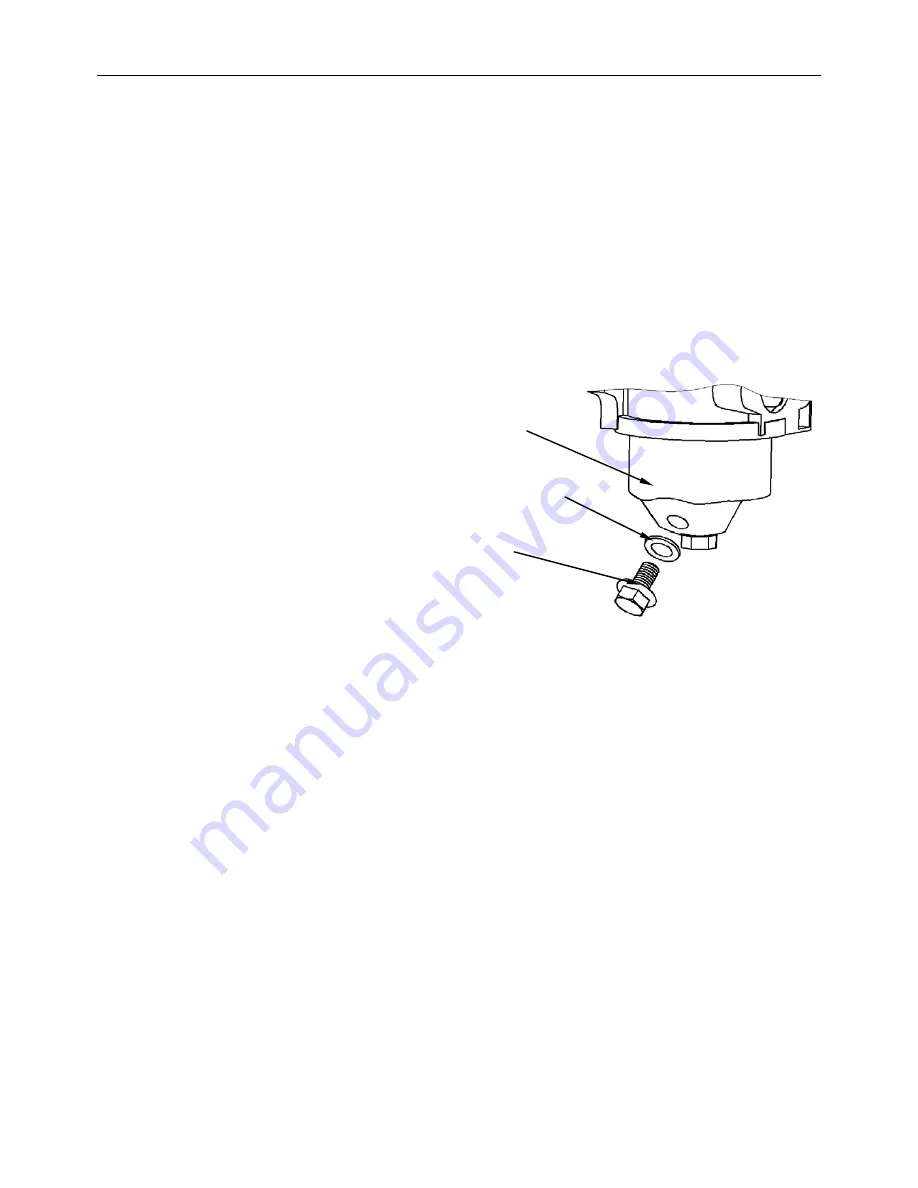
STORAGE/ TRANSPORTING
15
you can avoid fuel deterioration problems by draining the fuel tank and carburetor.
ADDING A FUEL STABILIZER TO EXTEND FUEL STORAGE LIFE
When adding a fuel stabilizer, fill the fuel tank with fresh gasoline. If only partially filled, air in the
tank will promote fuel deterioration during storage. If you keep a container of gasoline for
refueling, be sure that it contains only fresh gasoline.
1. Add fuel stabilizer following the manufacturer’s instructions.
2. After adding a fuel stabilizer, run the engine outdoors for 10 minutes to be sure that treated
gasoline has replaced the untreated gasoline in the carburetor.
3. Stop the engine, and move the fuel valve to the OFF position.
DRAINING THE FUEL TANK AND CARBURETOR
1.
Place an approved gasoline
container below the carburetor,
and use a funnel to avoid spilling
fuel.
2. Remove the carburetor drain bolt
and sealing washer, and then
move the fuel valve lever to the ON
position.
3. After all the fuel has drain into the
container, reinstall the drain bolt
and sealing washer. Tighten them
securely.
Storage Precautions
1. Change the engine oil.
2. Remove the spark plugs.
3. Pour a tablespoon (5-10 cc) of clean engine oil into the cylinder.
4. Pull the starter rope several times to distribute the oil in the cylinder.
5. Reinstall the spark plugs.
6. Pull the starter rope slowly until resistance is felt. This will close the valves so moisture
cannot enter the engine cylinder. Return the starter rope gently.
If your engine will be stored with gasoline in the fuel tank and carburetor, it is important to reduce
the hazard of gasoline vapor ignition. Select a well-ventilated storage area away from any
appliance that operates with a flame, such as a furnace, water heater, or clothes dryer. Also
avoid any area with a spark-producing electric motor, or where power tools are operated.
If possible, avoid storage areas with high humidity, because that promotes rust and corrosion.
CARBURETOR
FLOAT BOWL
SEALING WASHER
DRAIN BOLT














